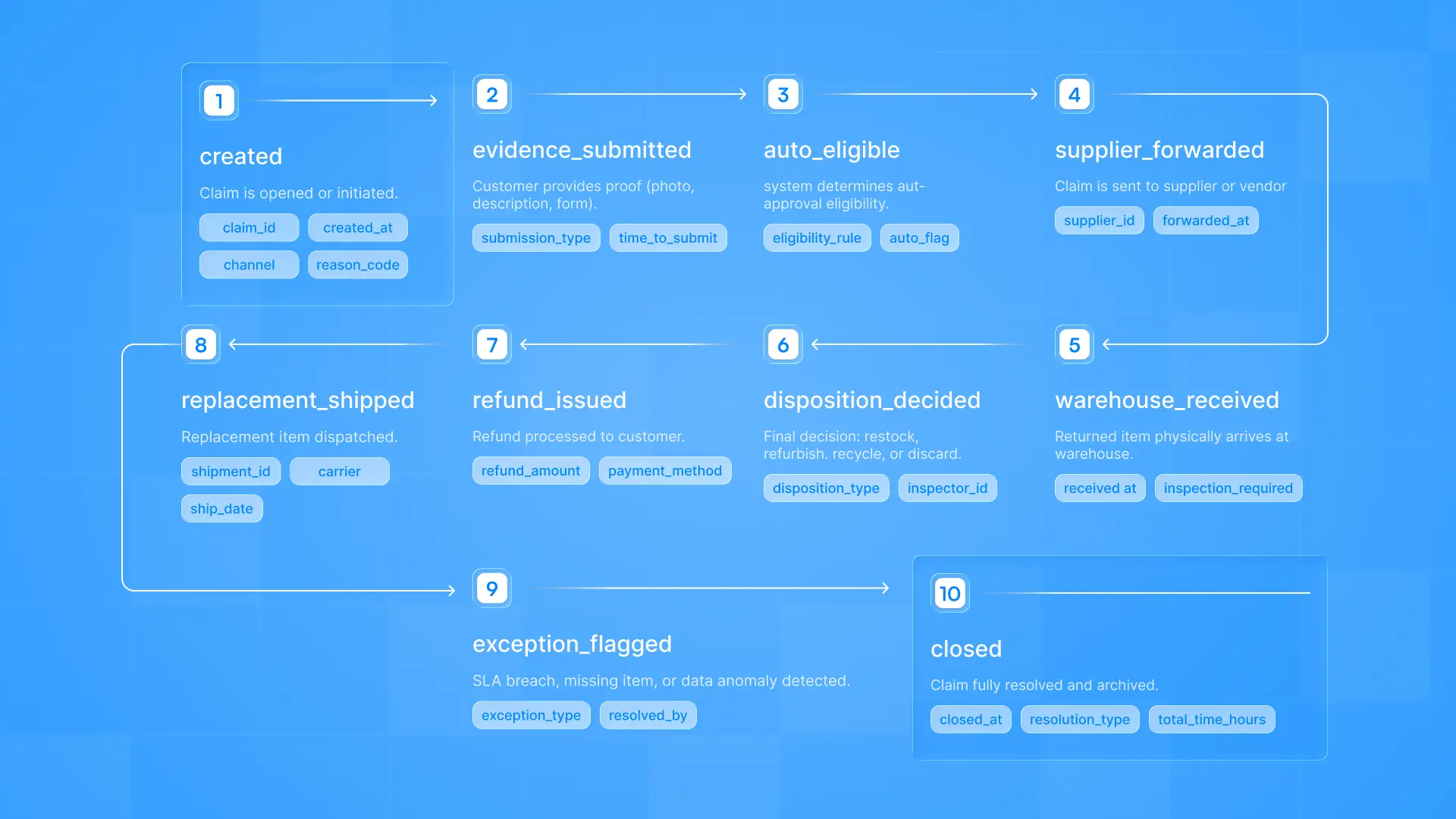.webp)
When you’re scaling returns operations, visibility is everything. Leaders who treat returns analytics like product analytics can uncover where time, cost, and customer friction pile up, and fix them fast.
This guide breaks down the 10 essential claim events and how to build a returns prevention loop that feeds back into product and packaging improvements.
Why Returns Analytics Matters
The National Retail Federation estimates that 2024 returns reached $890 billion, proof that returns aren’t just a logistics headache, but a massive data opportunity. Returns respresent a a logistics problem, but also a data opportunity. Every return captures signals about your product quality, supplier performance, and customer experience. Platforms like Claimlane centralize this data across your entire returns journey, from initial claim to final resolution. By instrumenting the right returns KPIs and claim events, teams can:
- Reduce time-to-resolution by isolating slow stages
- Reduce exception rates through supplier performance analytics
- Identify preventable return reasons to fix upstream issues
For industry context, check out DHL’s 2025 Returns Trends, which shows how speed and transparency are now key differentiators in ecommerce logistics.
The 10 Core Claim Events
Modern RMA systems automatically track these events across your workflow, ensuring consistent data capture. Here are the foundational events to track across your returns journey. Each one should be logged with consistent properties like claim_id, product_sku, supplier_id, and timestamps for accurate SLA measurement.

💡 Pro Tip: Start small. Even just tracking created, warehouse_received, and closed can give you a baseline time-to-resolution metric before expanding to the full schema.
Learn more about why event-level visibility matters in ReturnPro’s analysis on reshaping retail profitability.
The Three Returns Analytics Dashboards
Once your events are firing, visualize them in GA4, Looker, or your BI tool of choice. These three dashboards drive the most impact for operations leaders.
Case Study: See how Black Diamond Equipment reduced their returns SLA from 25 to 5 days with automated workflows and real-time analytics.
1. Time-to-Resolution Dashboard
Track claim lifecycle speed across different categories, suppliers, or regions.
- Median time between
created→closed - Outlier detection for slow resolutions
- Breakdown by supplier, SKU, or claim type
2. Top Return Reasons
Visualize top return reasons and their contribution to cost or delay.
- Frequency of
reason_codefromcreatedevents - Correlate with product category or seasonality
- Filter by
auto_eligiblevs. manual reviews
3. Supplier vs. Internal Resolution
Benchmark partner efficiency against in-house handling.
- Compare
supplier_forwarded→closedSLAs - Highlight which suppliers trigger most
exception_flaggedevents - Identify candidates for process automation or renegotiation
.webp)
The Returns Prevention Loop
Once your returns instrumentation is running, the data should do more than report, it should prevent. Feed insights from your reason heatmap back into:
- Product design: Address fragile parts, sizing issues, or common defects
- Packaging: Improve protective layers and instructions for reshipping
- Customer guidance: Clarify installation or use instructions that cause “no-fault” returns
The result: a continuous returns reduction loop that compounds ROI over time.
Ready to turn your returns data into a competitive advantage? See how Claimlane helps operations teams instrument and act on returns analytics.



